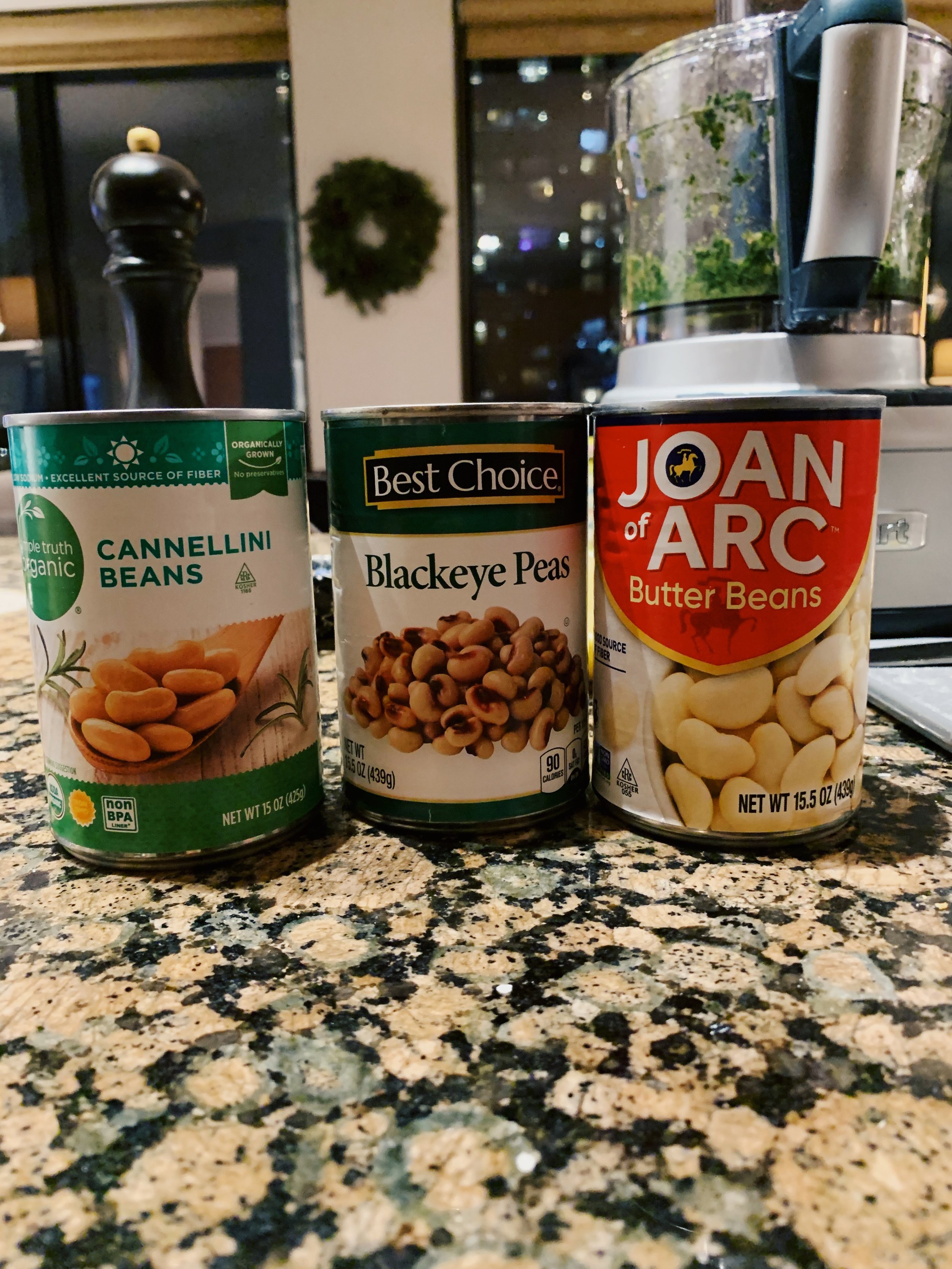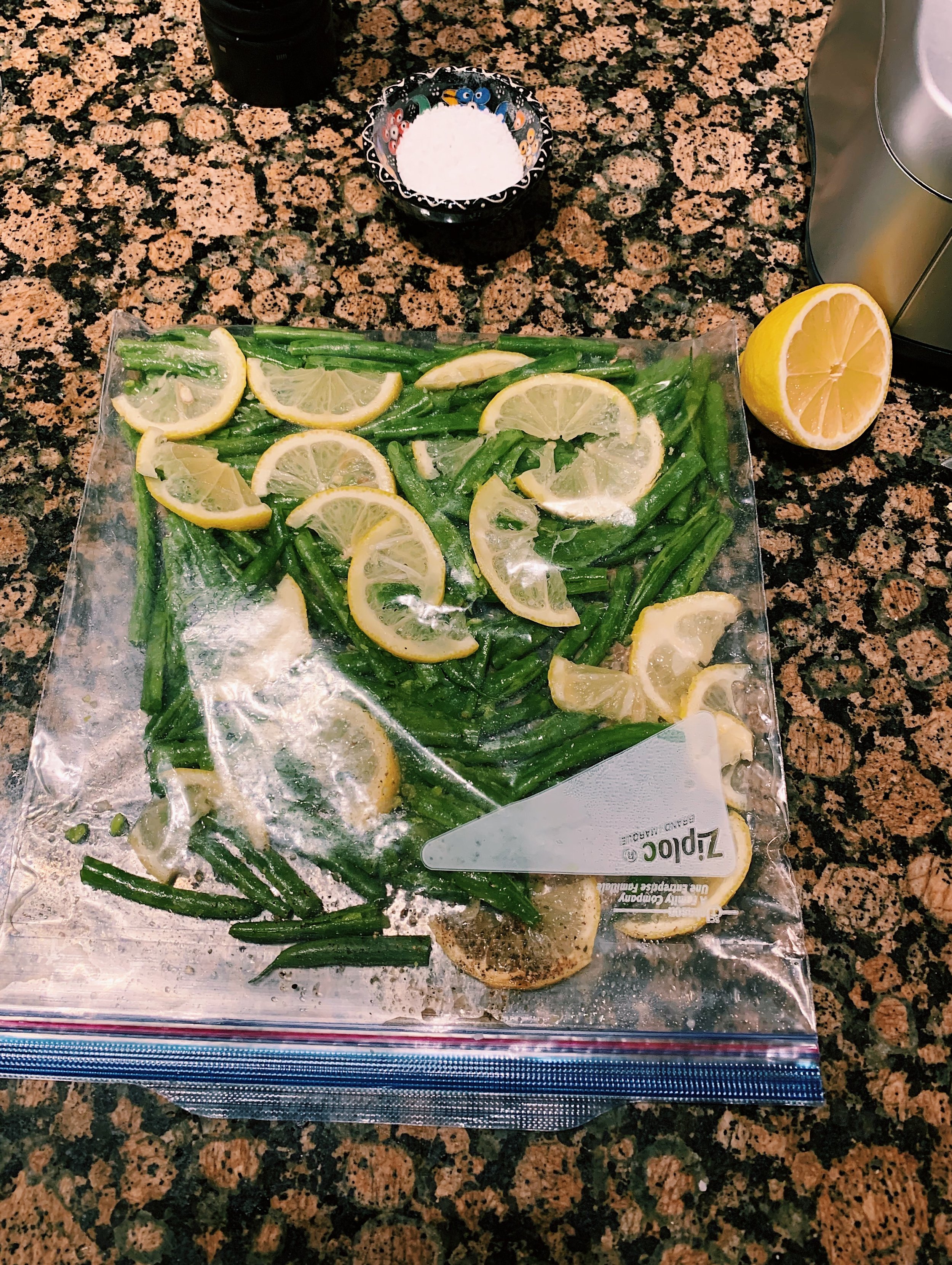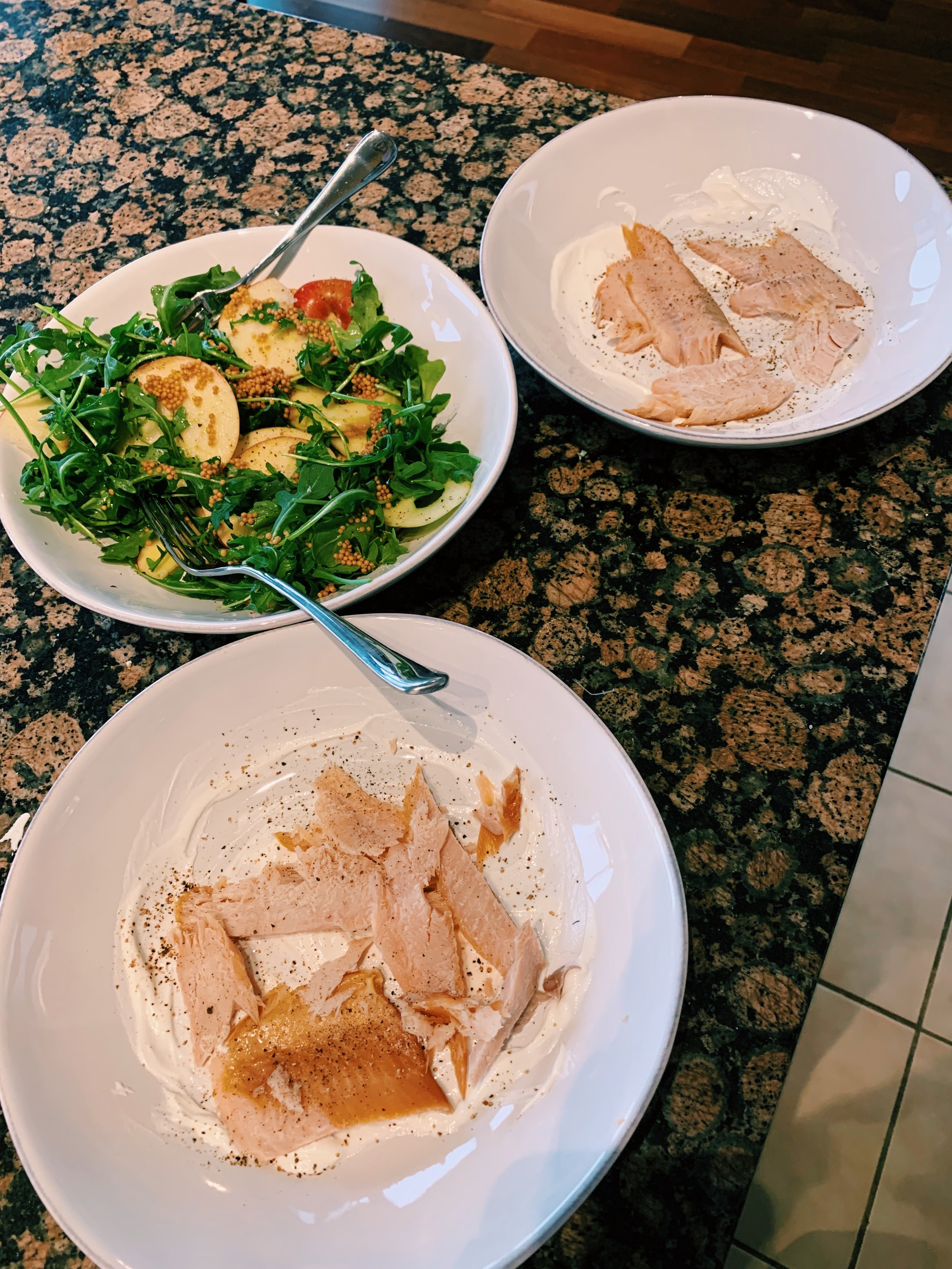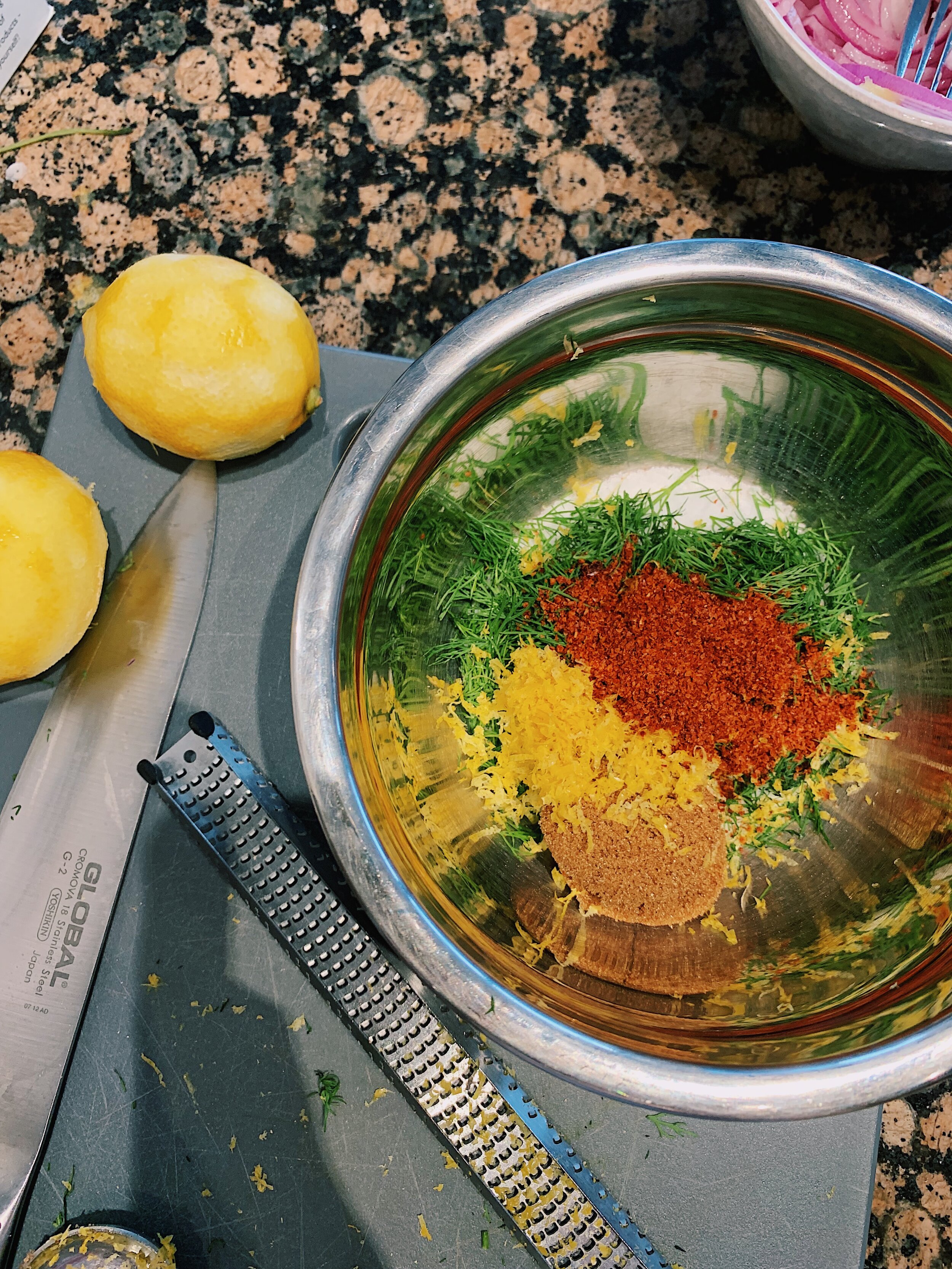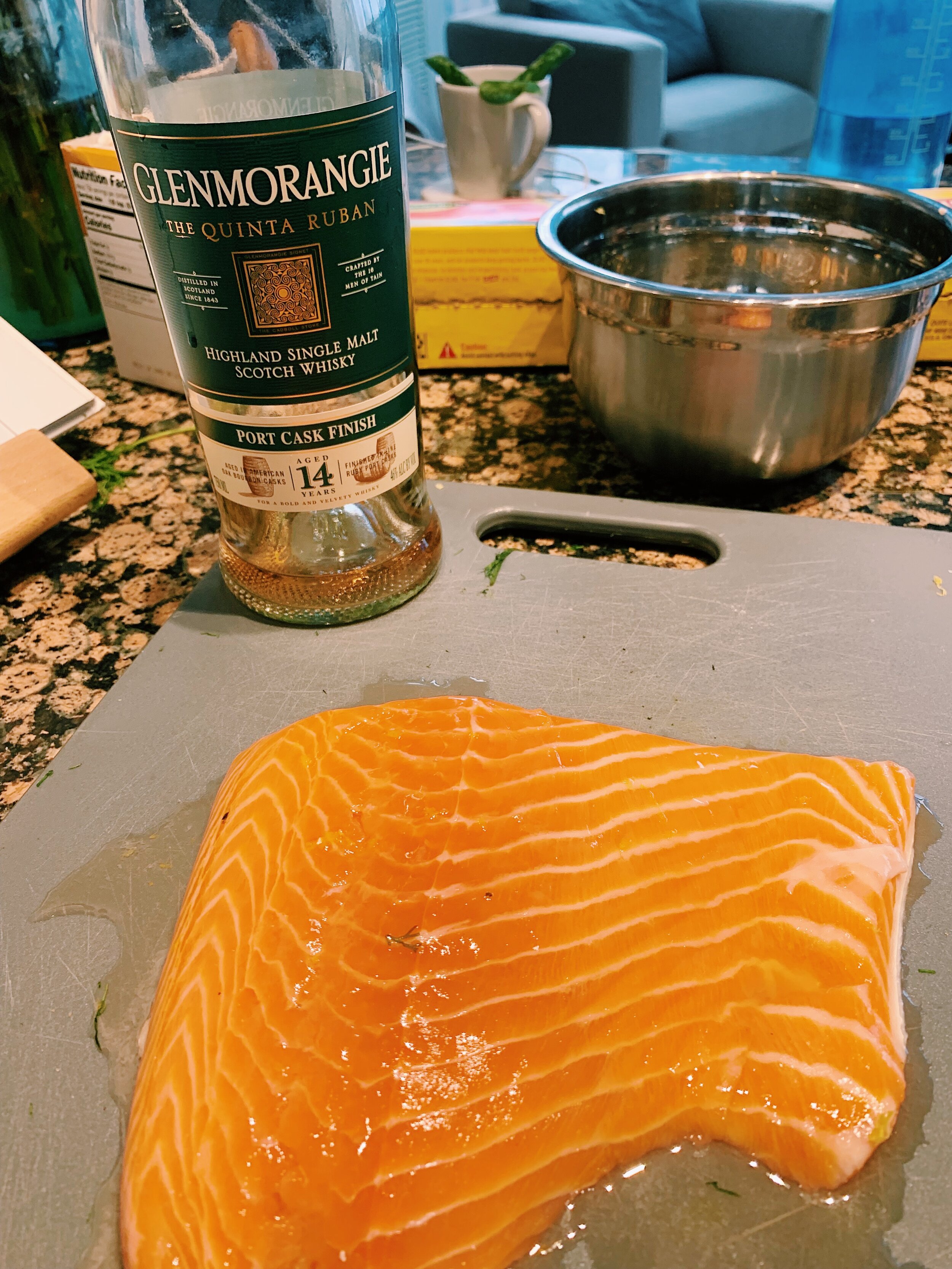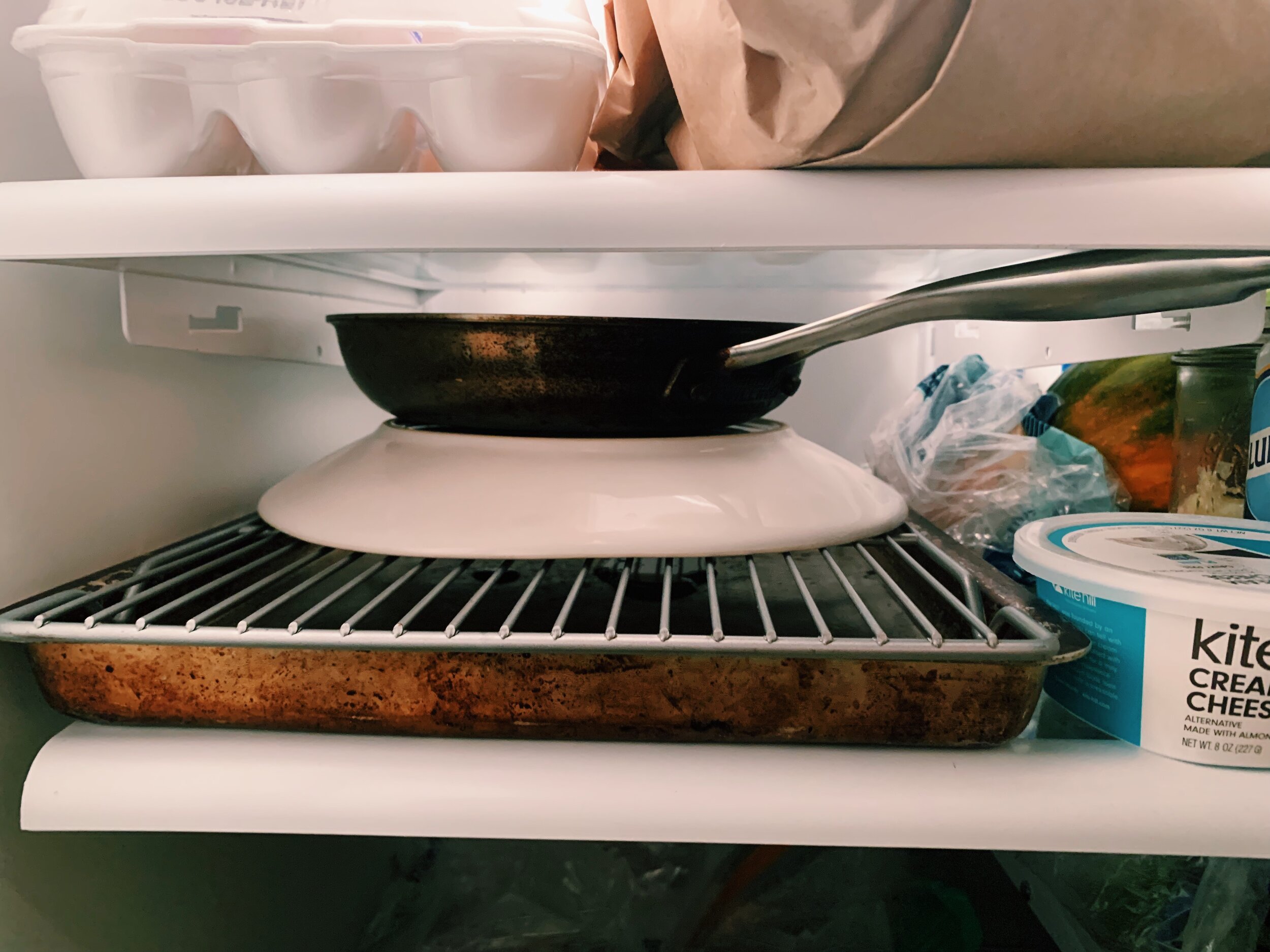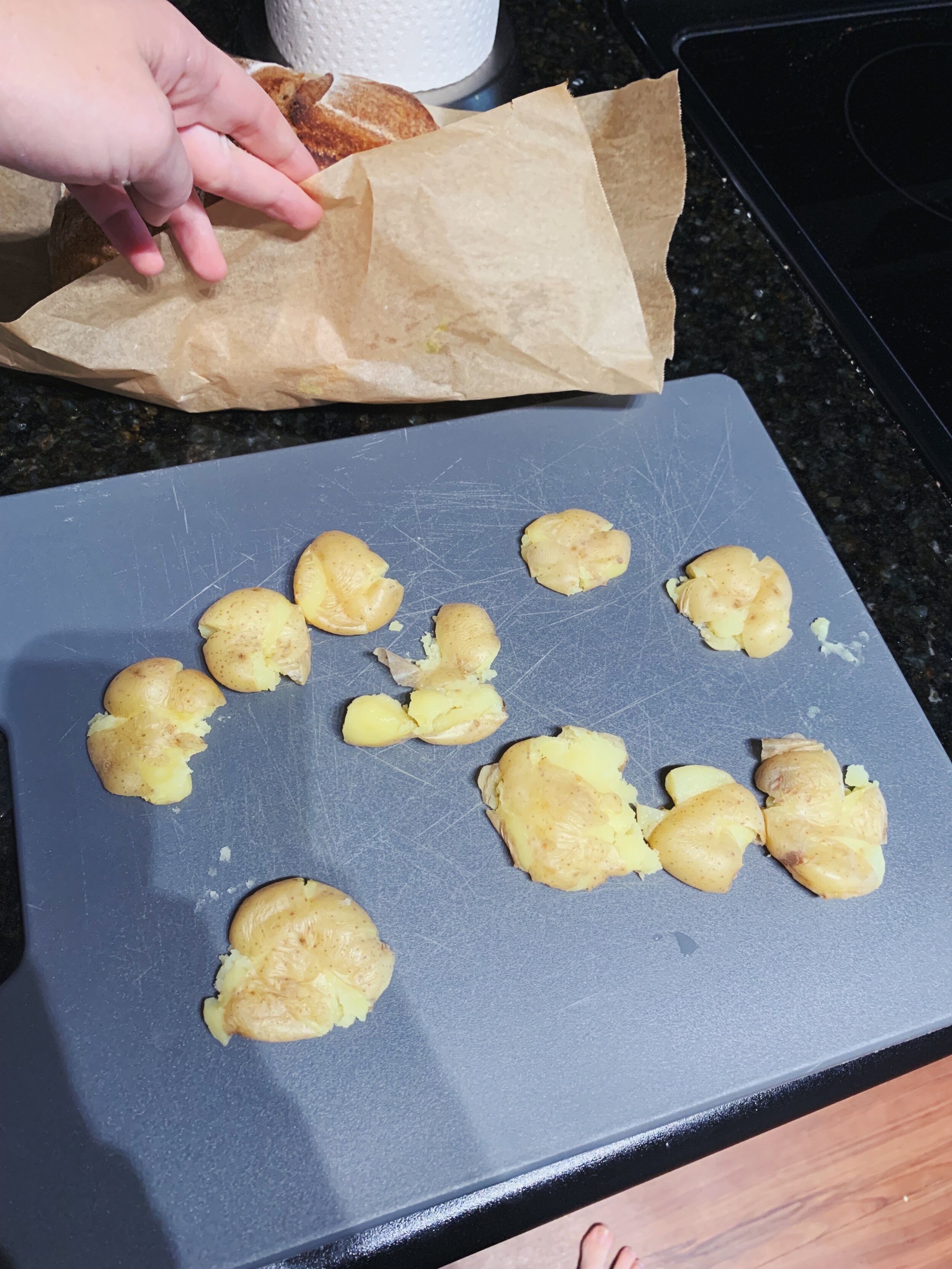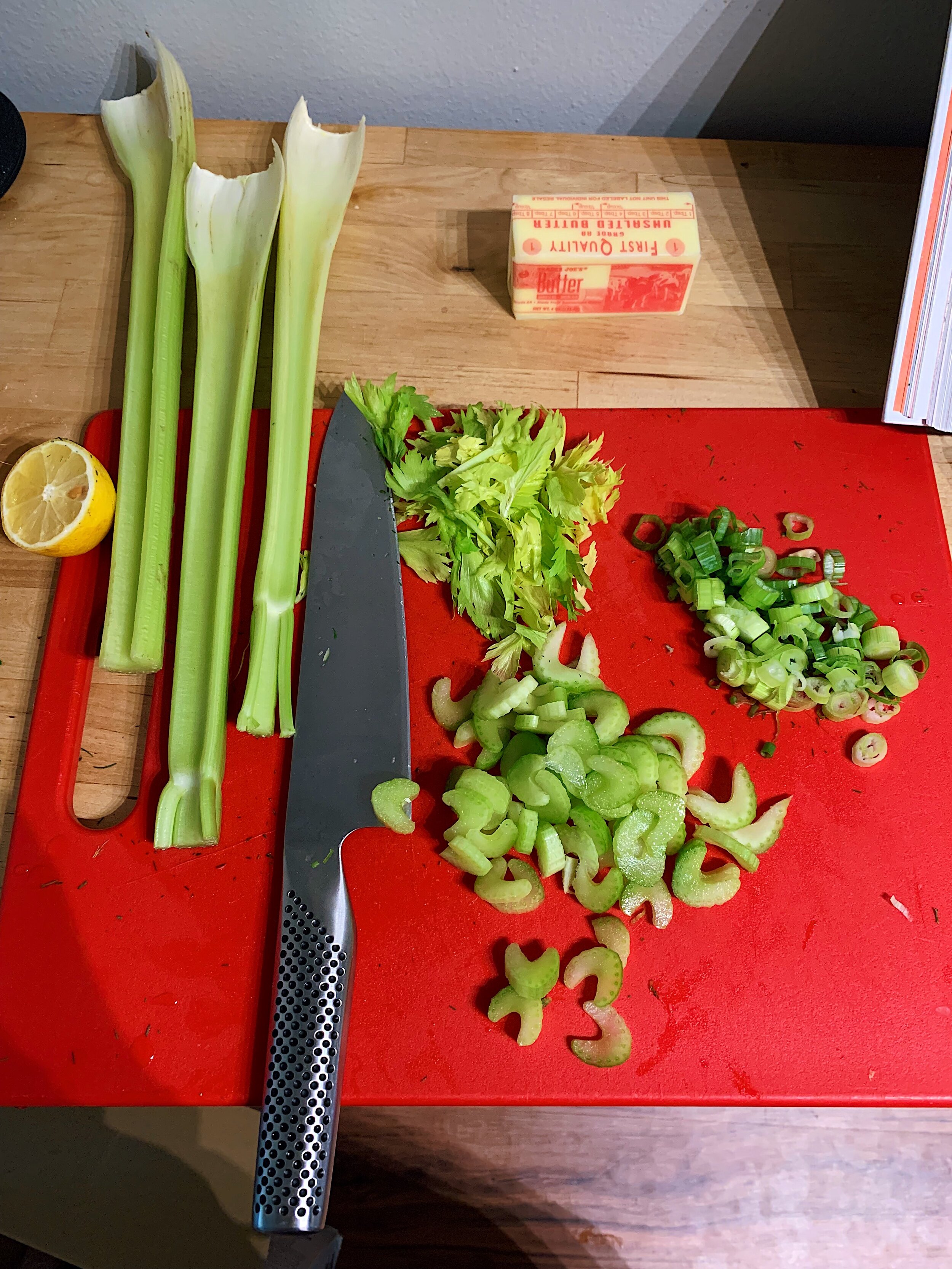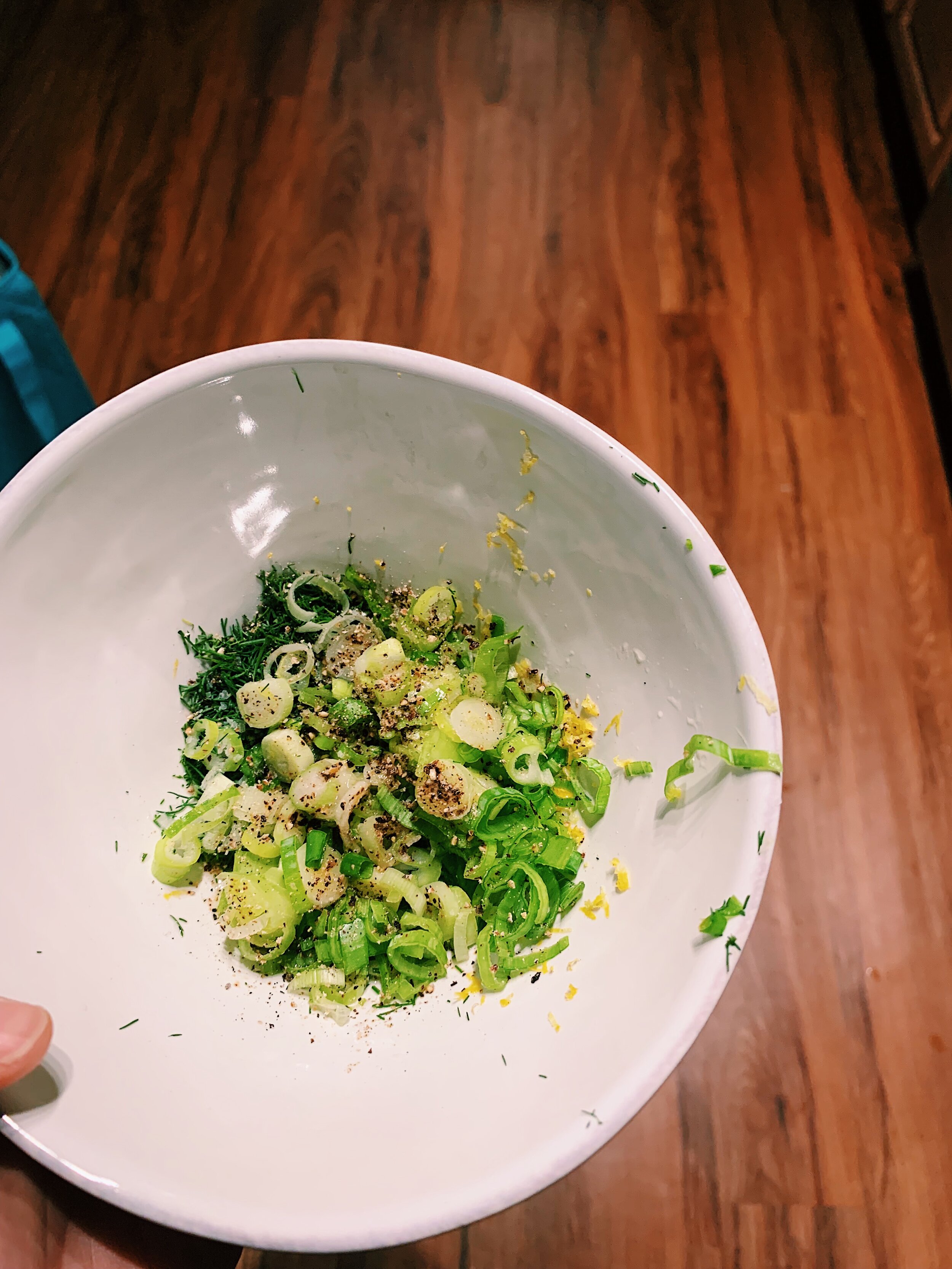I had several plans to make this bean salad throughout the course of this past summer. Every time I went to make it, something distracted me or set me on a different course. Maybe I couldn’t find a can of butter beans in the store that day. Maybe that gathering we were supposed to attend got canceled. Maybe the last thing I felt like doing was pulling out my food processor. This salad is, no doubt, a dish meant for the summertime — warmer weather, perhaps an outdoor setting to eat it in. But I finally found myself, in the middle of snowy January making a four bean salad for a group of people in need of some summertime cheer.
I threw together this salad on Wednesday night. I started by rinsing and draining the three canned bean varieties: butter, cannellini, and black eyed. I try to drain beans as far in advance of using them as I can so they don’t bring extra water/moisture with them. Though a bit harder to find, particularly the black eyed and butter beans, this combination works really well together — especially with their different sizes.
While the beans dried out, I put together the romesco in my food processor, which eliminated much of the required chopping. I first wrote about this romesco when I made Alison’s Crispy Skinned Salmon (a top recipe from the project). Last time, I used almonds. This time, I tried walnuts, and didn’t notice a major difference.
I then cut up the fresh green beans and lemon slices and tossed them in a gallon-sized Ziploc bag with salt and pepper. Using the bottom of my non-stick skillet, I set about bruising the beans and lemons by whacking the skillet over them with force (but not too much — last time I used this method for a recipe, the bag broke and it made a whole mess.) I didn’t aim for mashed beans, but mildly dented.
I tossed all of these ingredients together with more lemon juice, salt, pepper, and dill, and put the bowl in the fridge.
On Thursday, January 13, my parents, two siblings, and husband, gathered in the cold to commemorate my grandmother’s beautiful life by her graveside. She lived 93 years packed with authentic joy, weathered loss, and radical authenticity. I loved my grandmother so much. She was and still will be a lifelong role model for me. Her funeral was an intimate and meaningful time of sharing stories and remembering her life. We went to lunch at her favorite restaurant afterward and I ordered salmon, just like she always did.
That night, my family came to my apartment to unwind from the long, emotional day. I served them this salad. It was perfect. They each remarked how fresh and lemony it tasted. They liked the crunchy texture of the beans and pops of dill. Each person dressed it up differently, adding Cholula or tortilla chips or feta cheese. The bowl was pretty much gone by the end of the night. I’m glad I inadvertently waited so long to make this salad.
211 recipes cooked, 14 to go.


